Senseit L301 - when a smartphone takes care of you
This time, a niche device fell into testing, which the manufacturer calls the first caring smartphone designed to meet the needs of users of a respectable age. Did the company, which previously specialized mainly in secure smartphones, manage to realize its plan?

Bluetooth - 3.0
Wi-Fi - 802.11b / g / n
Number of SIM cards - 2 Dual SIM Dual Standby (DSDS);
Navigation - GPS, A-GPS
Display - FWVGA TFT, 4.5 ''
Display Resolution - 480x854, 240 ppi
Type of sensor layer - capacitive, multi-touch
Camera - 5 MP (autofocus, flash),
Front camera - 0.3 MP
Processor - MediaTek MT6572AW ,, 2 cores, 1.2 GHz
Video chip - Mali-400MP
Memory - 512 MB
Storage - 4 GB
Support for memory cards- MicroSD up to 32 GB
Multimedia - FM - radio, audio jack: 3.5 mm
Operating system - Android 4.2 Jelly Bean
Power - 1,700 mAh, removable
Weight - 143 grams
Sensors - gyroscope, accelerometer, compass, light sensor, proximity sensor
Dimensions - 135 x 67 x 11 mm;
Special - Emergency call button, flashlight
Price - 6,490 rubles

It does not have any additional functions, but its main task is to simplify the process of charging the phone and save the user from having to bother with connecting a Micro USB cable, it performs well.

Rubberized legs on the base of the dock are firmly attached to the surface and eliminate the possibility of slipping.
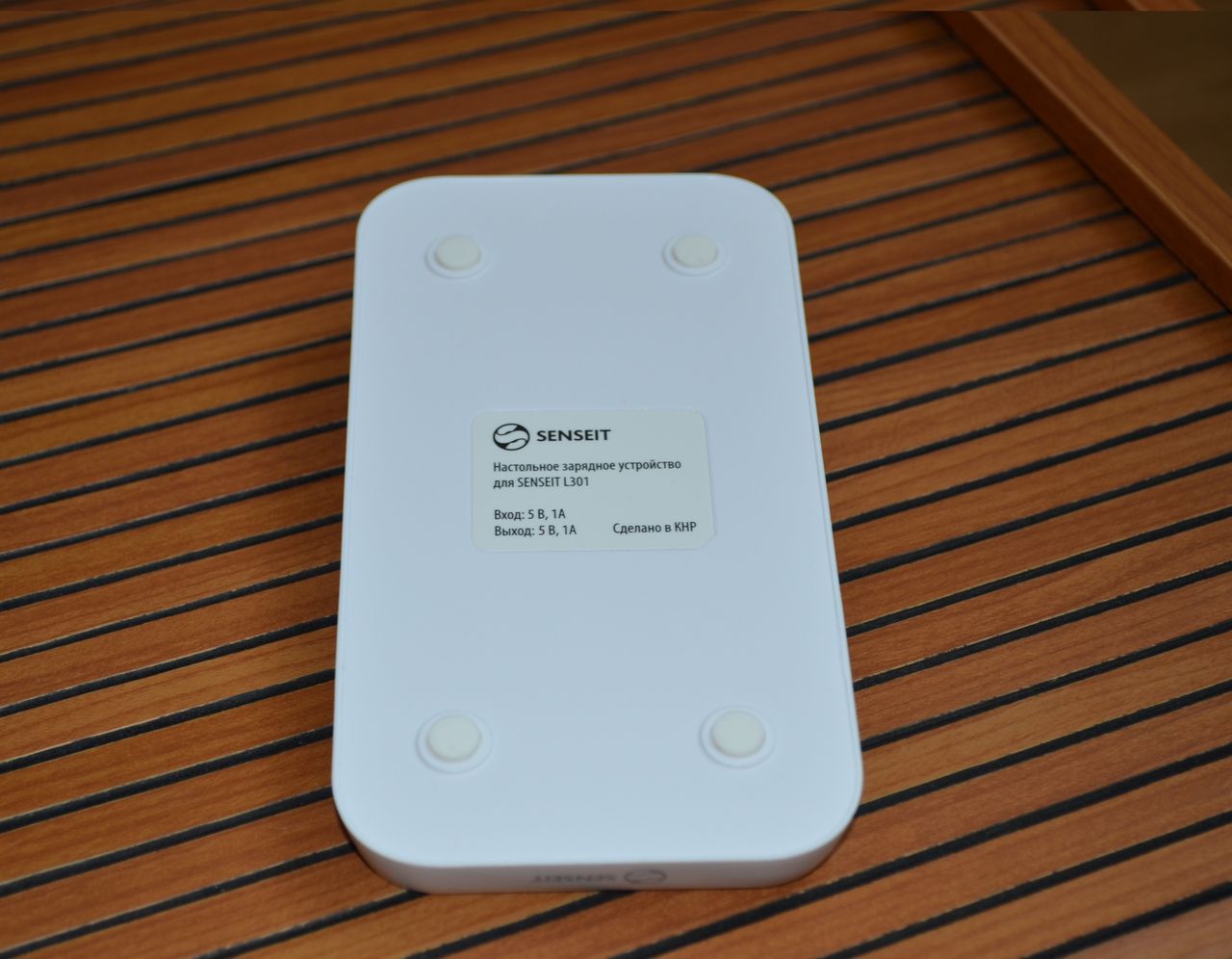
The smartphone fits securely into the recess provided for it and does not walk.
The first thing that catches your eye when considering the device is the features of the controls. The three touch keys responsible for the basic operations in the Android OS are significantly larger than most devices.
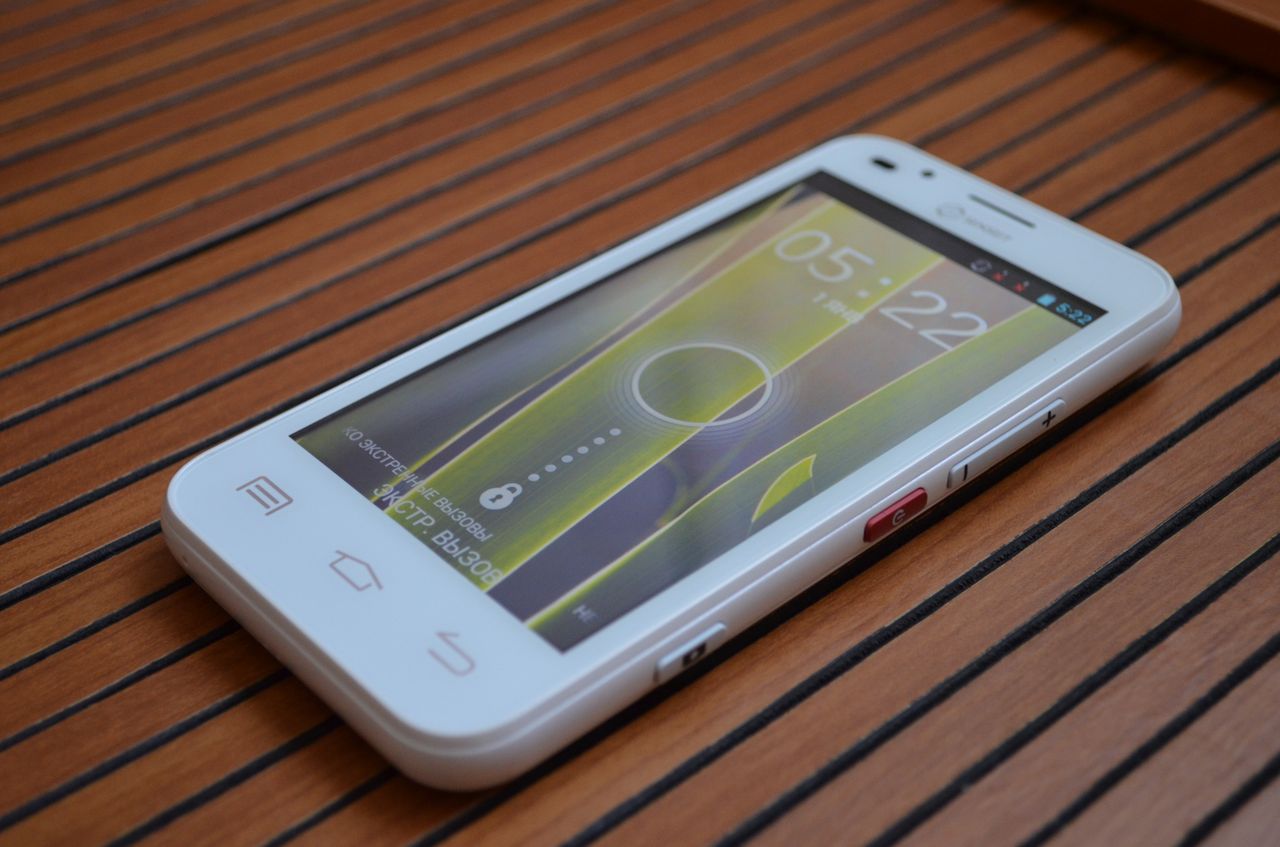
On the left side of the L301 are two slide switches that are easily distinguishable by touch. The upper one is responsible for the function of the FM radio. Interestingly, it is not necessary to connect headphones to listen to the radio. The receiver works due to the antenna built into the housing.
The bottom switch activates the flashlight. It is not very bright, but it can help out in difficult times. If it is difficult to lighten the road with its help, then in order to highlight the keyhole or to help find the keys in the bag, it fits perfectly.
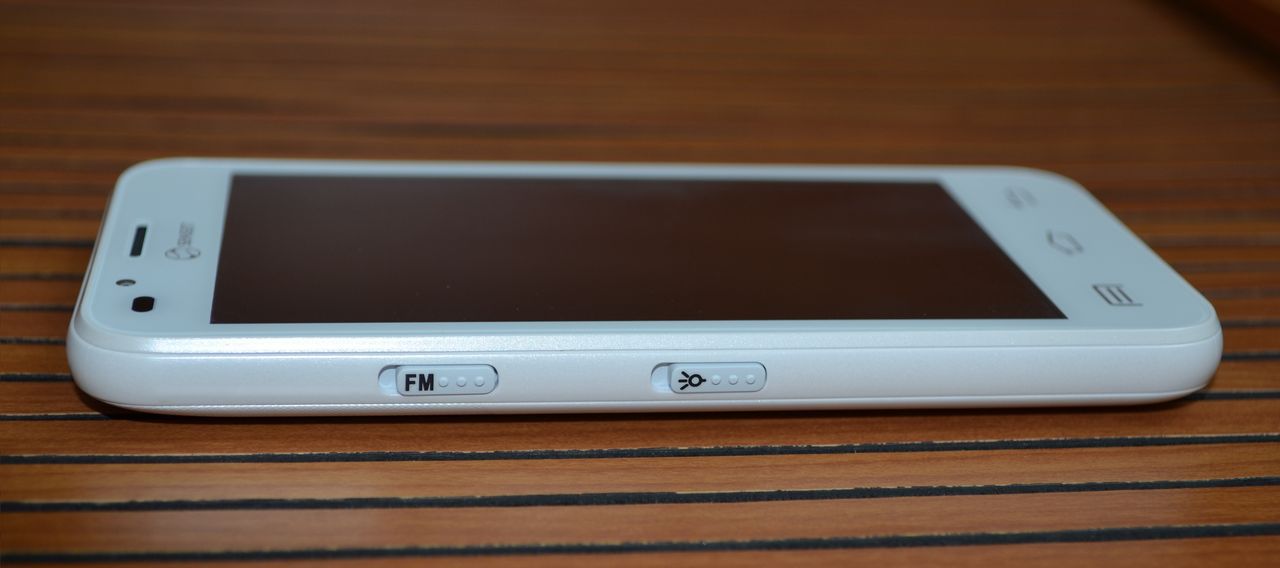
On the right is the red unlock button. Above it is a volume rocker, and below it is a camera activating key.
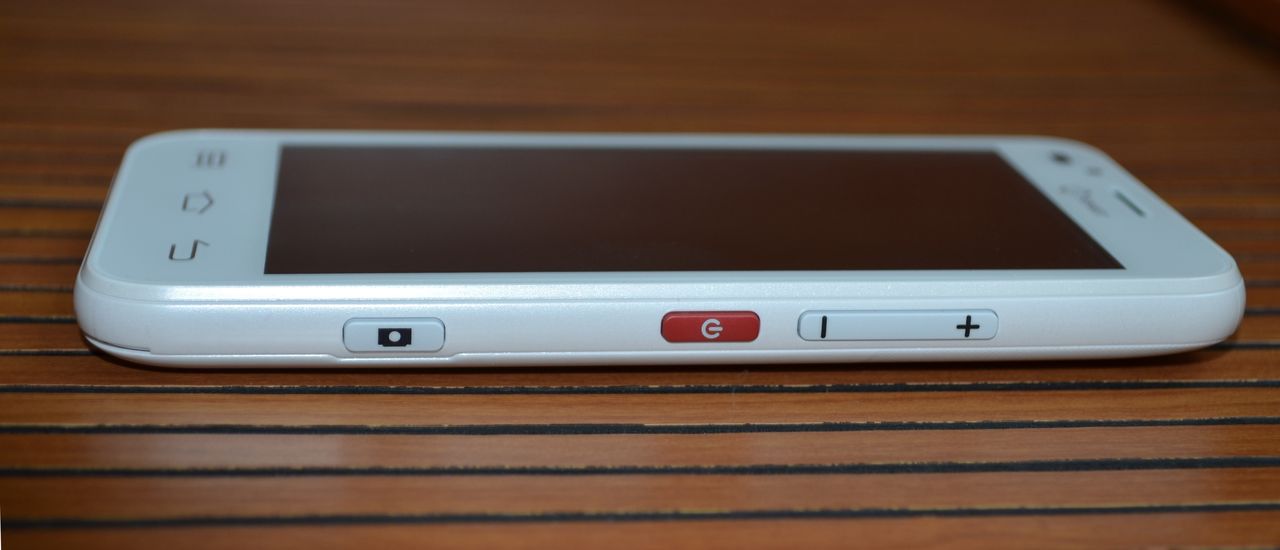
And finally, another outstanding detail is the red SOS button on the back of the phone. Its functionality will be discussed in detail below in the section on software.
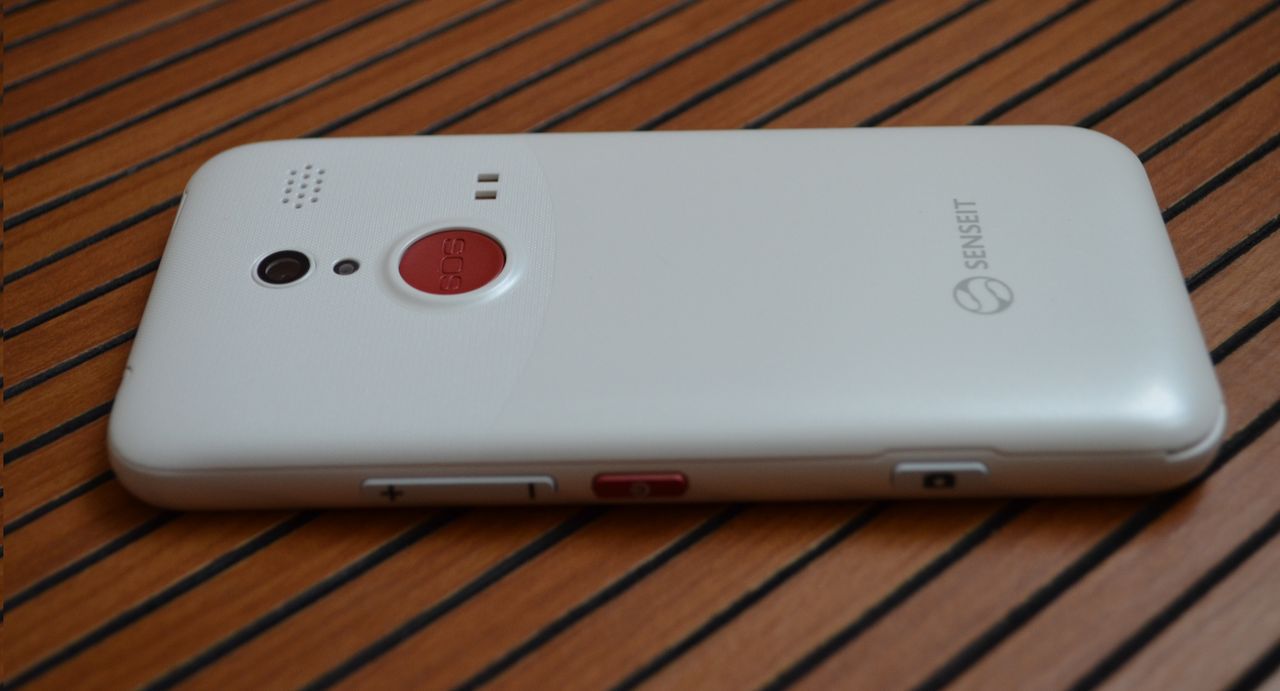
The last element to be noted is the lace hole at the bottom of the unit.
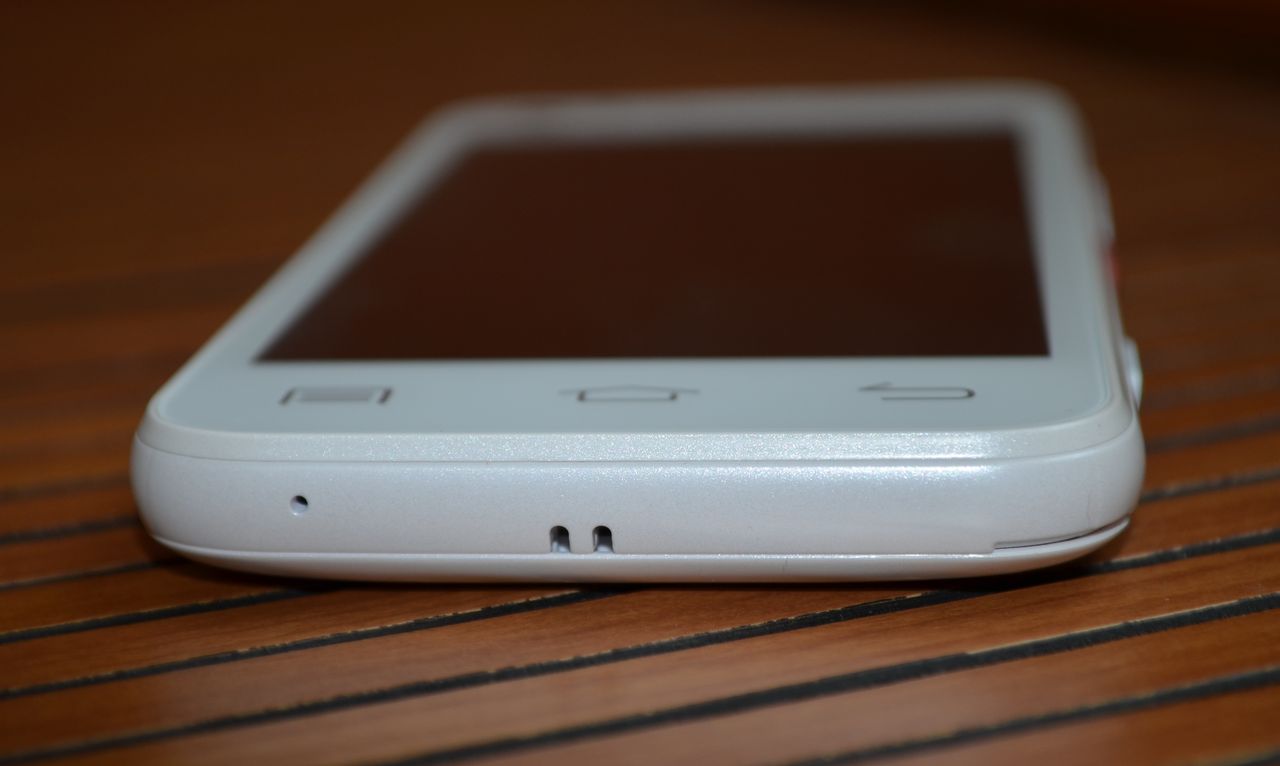
Obviously, the manufacturer did a lot to achieve high ergonomic performance L301 and in general - he succeeded. Some comments can be made regarding the soiled body of the white version of the L301 and the clarity of the SOS button. The latter is pressed vaguely and has a small power reserve, to be sure of pressing, it is necessary to press on it exactly in the middle.
A user who wants to use the cord will be faced with the fact that the smartphone does not fit in the dock. It should have provided for a corresponding recess.
The build quality does not cause any complaints, the plastic case lacks torsional rigidity, but small creaks are not critical for everyday use.

The display cover is plastic and without a complete film will soon be covered with minor defects.
The sensitivity of the touch layer is sufficient, and it is almost impossible to miss the large menu items.

When creating it, first of all, emphasis was placed on simplicity and convenience. The place of the standard labels was taken by bright tiles with clearly distinguishable signatures, and the launcher functionality was somewhat simplified. Justified, if you take into account the positioning of the Senseit L301.
Only three desktops are available for the user without the possibility of adding new ones. The only widget supported by the launcher is located on the home screen - "weather". Add your own, again, does not work.

The settings menu was divided into two subsections, one of which housed the most frequently used and necessary items, and the other a complete set of settings. Especially for users with low vision, system fonts are enlarged (the only preinstalled application, some of which remains small, is a calendar).
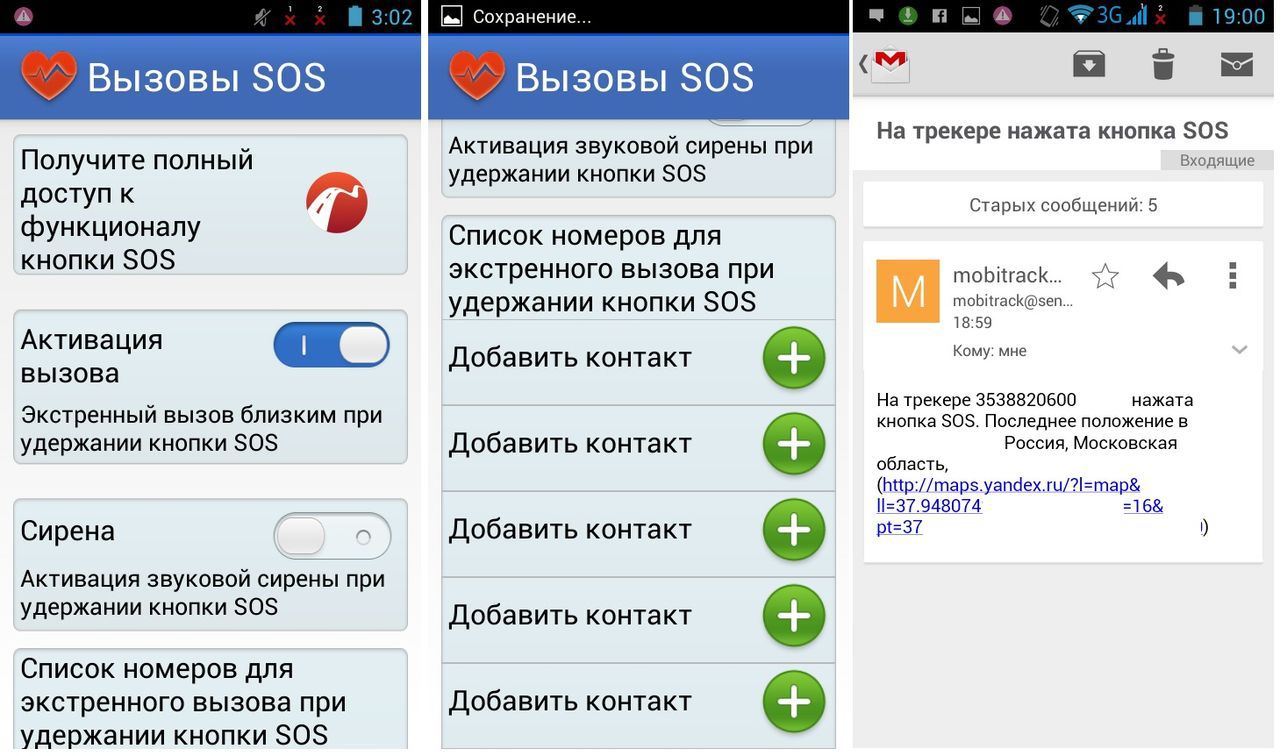
Pressing the SOS button activates a call to a predetermined number (it is important to note that after that the speakerphone mode is activated, so that the phone does not have to be held in hands) or an alarm siren (the sound signal is played through the main speaker, but you cannot call it really loud).
Additional functionality is implemented through MobiTrack's proprietary GPS tracking service.
By activating a free subscription, the user gets access to the personal account on the site, through which you can track the movement of the device (data is transmitted to the server via the Internet connection every five minutes). MobiTrack stores the history of routes and is able to complete the route, even if data on part of the points were not received. There is the ability to configure geofences. If the owner of the device enters or leaves such a zone, MobiTrack will generate a notification. E-mail alerts, by the way, come without noticeable delays.

A paid subscription extends the functionality of the service somewhat, but there is no great need to purchase it. The need for paid tariffs can arise only if it is necessary to track three or four devices.
In addition to unremarkable pre-installed applications of social networks, gallery, voice recorder, skype and browser, a tile with the inscription “magnifier” was found. Digital zoom can really help to parse text, but this application can not be called a full replacement for magnifying glass due to the fact that the picture is very noisy.
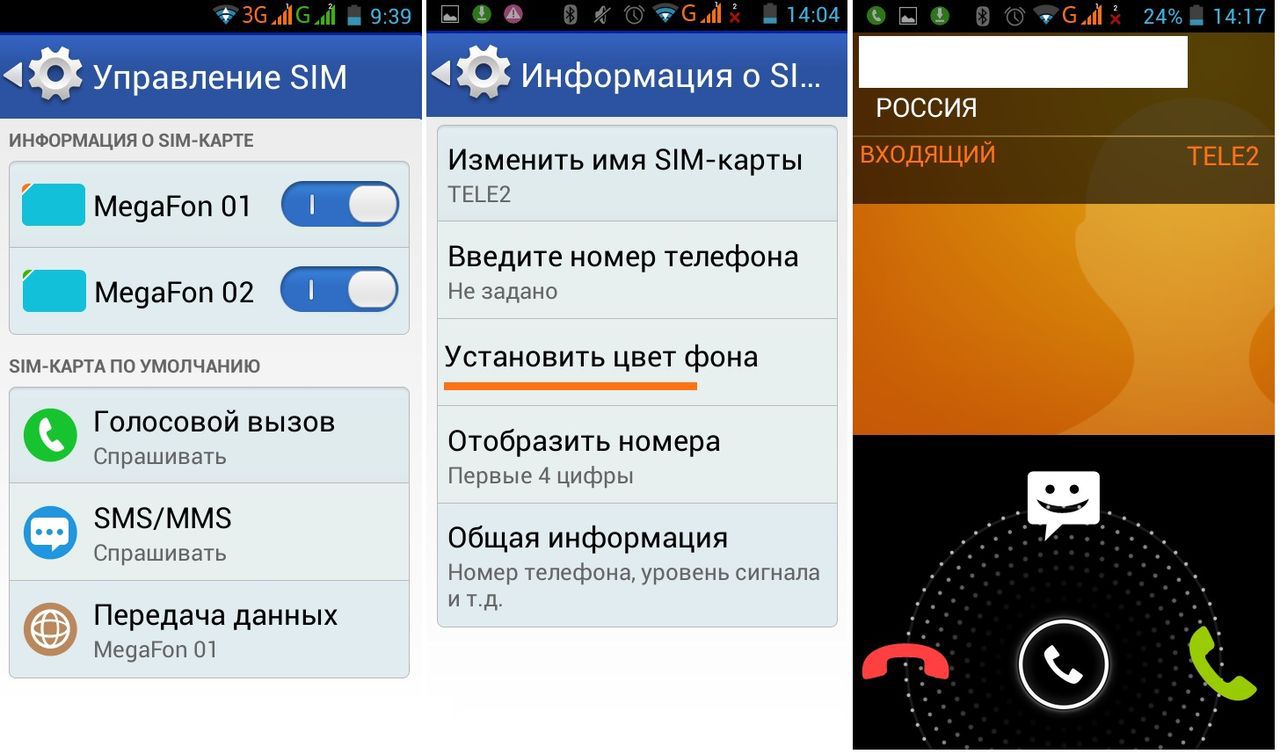
The Dual Standby mode specified in the specifications of the smartphone provides the simultaneous operation of two cards, but only for reception. During a call, only an active SIM card has access to the mobile network. The volume of the voice speaker is more than sufficient, but the complete headset of stars from the sky is not enough.
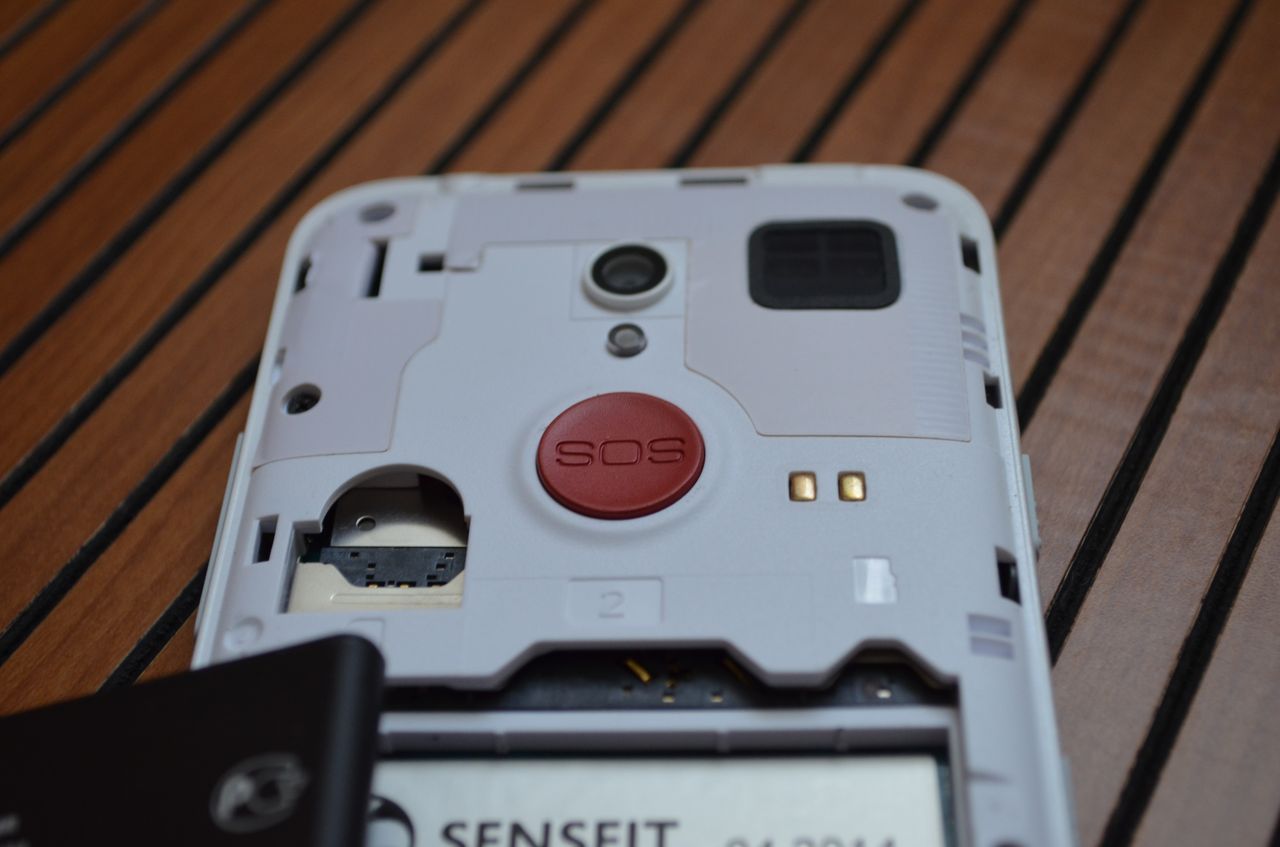
The functionality is also somewhat limited by the fact that only one of the cards can work in 3G networks, while the second only works in second-generation networks. Wi-Fi and Bluetooth perform their functions normally, there were no problems in their work.
GPS takes about 7 minutes to get a cold start, positioning accuracy is quite high, but in areas with very dense buildings, the signal may be lost.
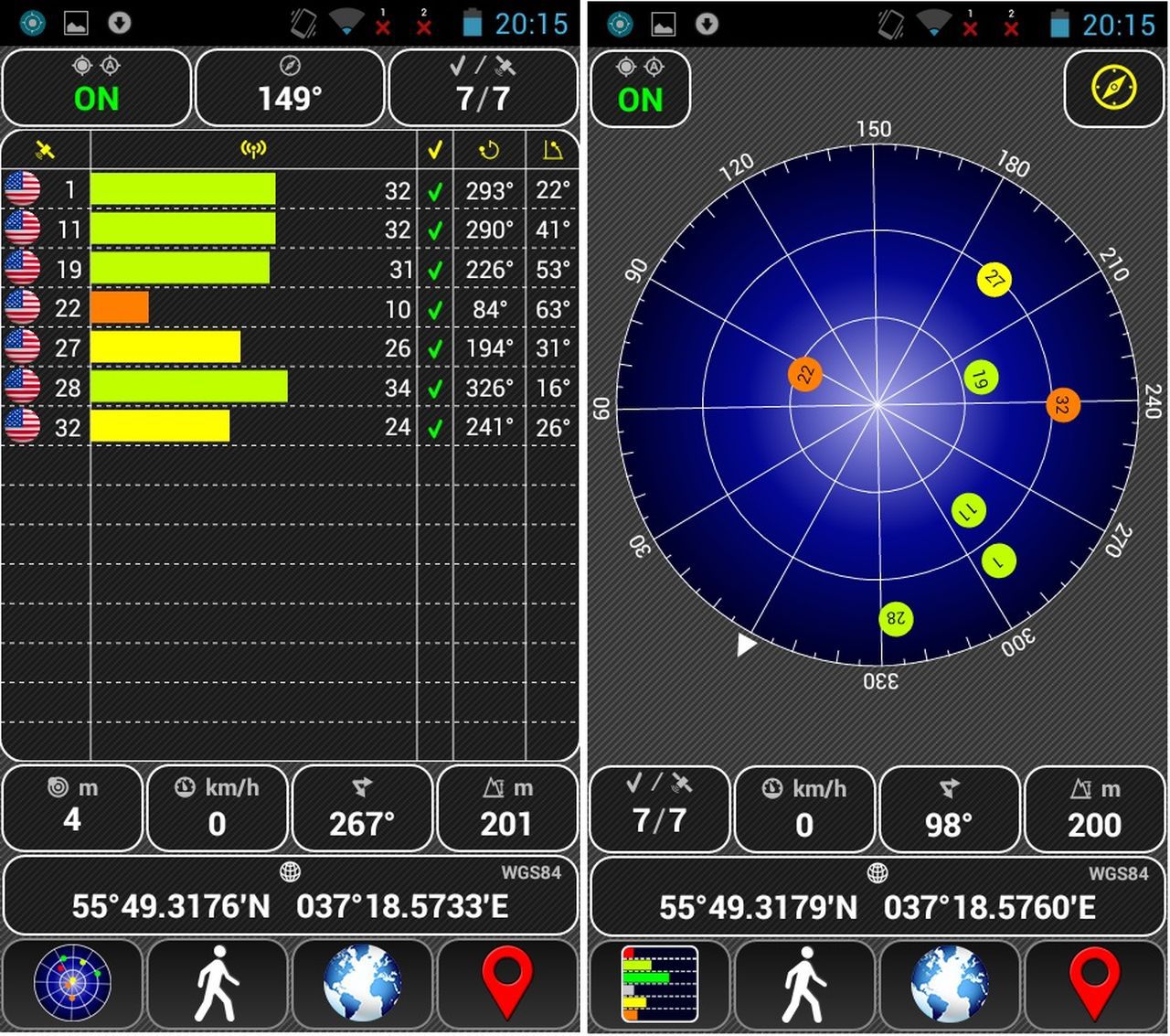
In the open air, the FM receiver works flawlessly even despite the absence of an external antenna, the role of which can be played by a headset. Searching for radio stations gives 45 results in the range from 87.5 to 104.7 MHz. In the room, the number of received radio stations is reduced to 28. There is an air recording and a short list of favorites that can be replenished with five favorite radio stations.
The interface works quite quickly, the performance allows you to comfortably play 2D and undemanding 3D games. As for video decoding, the L301 does a good job with short videos and streaming video resolutions up to 480p. Attempts to play large video files were unsuccessful.

In the universal AnTuTu, the Senseit L301 scored 10,926 points, and in the performance-oriented 3D graphics, the Bonsai Benchmark scored 1,015 points. The amount of RAM is 512 MB, of which about 150 MB remains free, 4 GB of internal memory, but only 1.3 GB is available to the user. Supported memory cards up to 32 GB.
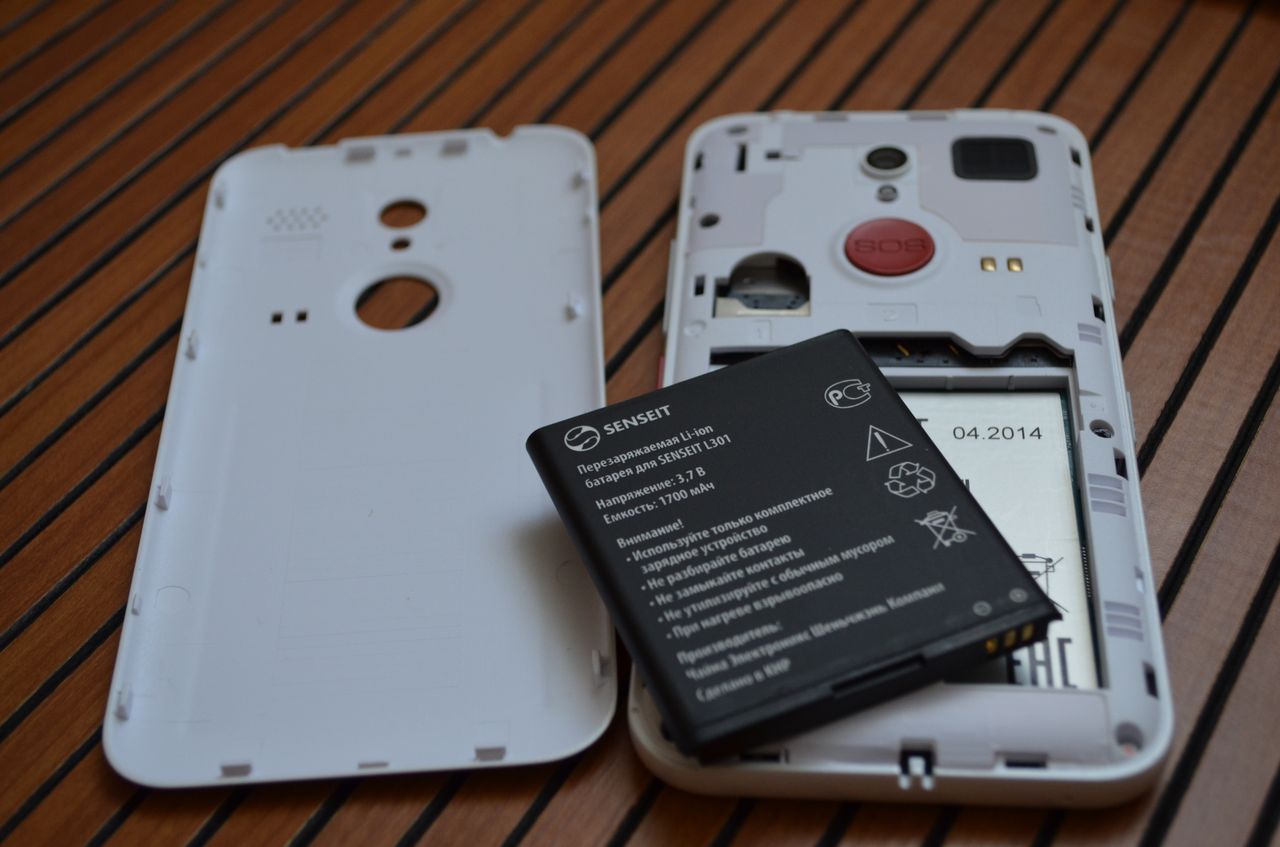
In fact, with moderate use from this smartphone, you can expect about two days of battery life. Using a function such as a phone on / off schedule can add about another day to this period. However, these indicators do not take into account the power consumption of the GPS module, but a lot depends on the frequency of MobiTrack data update and the quality of satellite signal reception. During testing with tracking enabled, the phone worked without recharging for about eleven hours. The time to fully charge the battery, in turn, is about three hours.

The camera application does not provide any special features.

There are four already standard shooting modes (Normal, HDR, Capture a smile, Panorama). You can shoot in series of 3 or 6 frames.
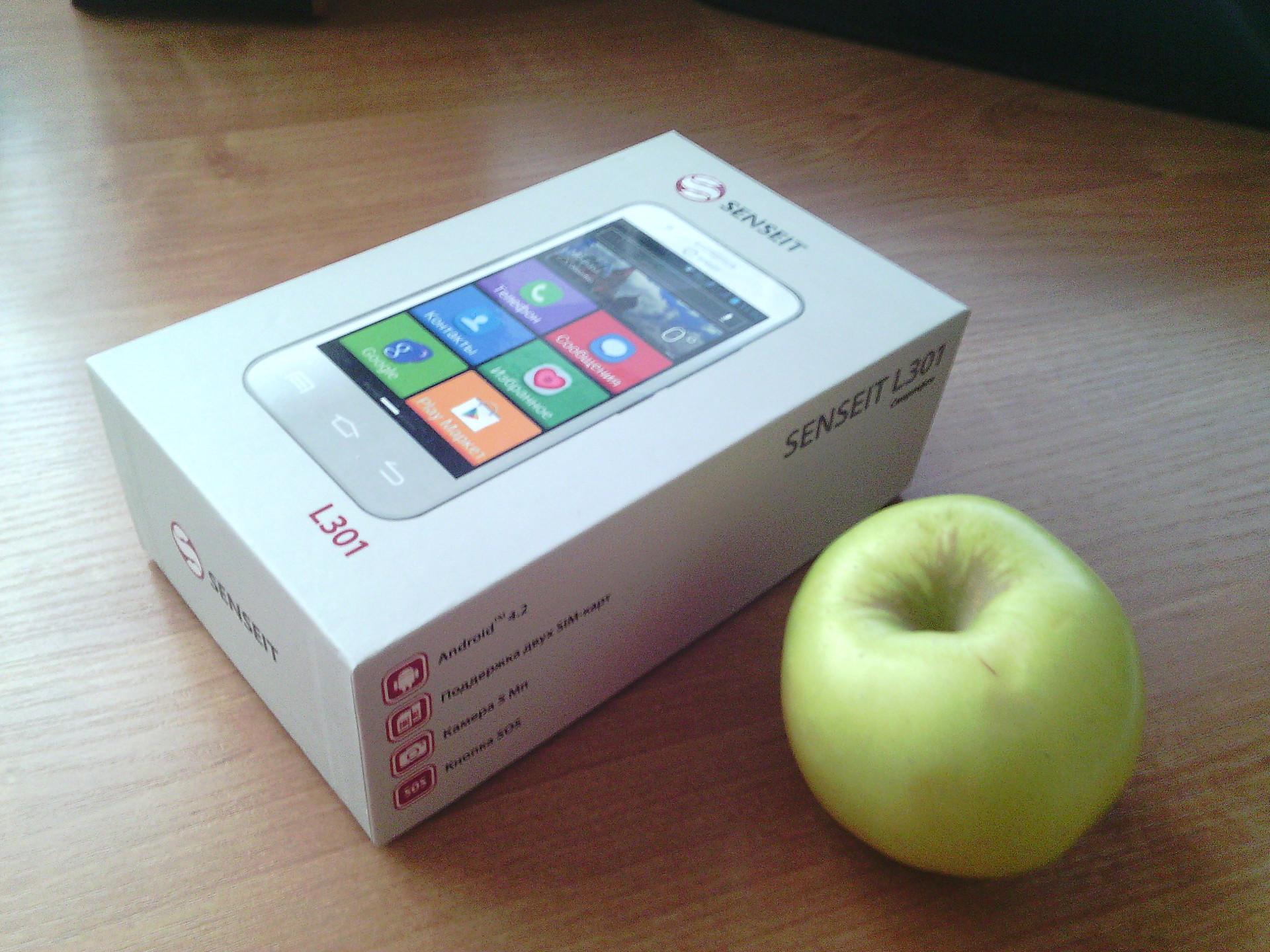
The photo does not have enough brightness, there are problems with color reproduction, sometimes autofocus fails. Decent shots can only be obtained in good natural light. However, you can judge the quality of the pictures yourself by looking at the illustrations.
Probably in the future we will see many more such solutions, while the Senseit L301 actually has no competitors.
Pros:
Minuses:
Do not forget to follow us on Vkontakte , Twitter and Google+ ! And of course, subscribe to our blog on Habré in your profile .

Technical Specifications Senseit L301
Communication - 2G: GSM 850/900/1800/1900 MHz; 3G: WCDMA 900/2100 MHzBluetooth - 3.0
Wi-Fi - 802.11b / g / n
Number of SIM cards - 2 Dual SIM Dual Standby (DSDS);
Navigation - GPS, A-GPS
Display - FWVGA TFT, 4.5 ''
Display Resolution - 480x854, 240 ppi
Type of sensor layer - capacitive, multi-touch
Camera - 5 MP (autofocus, flash),
Front camera - 0.3 MP
Processor - MediaTek MT6572AW ,, 2 cores, 1.2 GHz
Video chip - Mali-400MP
Memory - 512 MB
Storage - 4 GB
Support for memory cards- MicroSD up to 32 GB
Multimedia - FM - radio, audio jack: 3.5 mm
Operating system - Android 4.2 Jelly Bean
Power - 1,700 mAh, removable
Weight - 143 grams
Sensors - gyroscope, accelerometer, compass, light sensor, proximity sensor
Dimensions - 135 x 67 x 11 mm;
Special - Emergency call button, flashlight
Price - 6,490 rubles
Equipment
Senseit L301 is equipped with an adapter for mains power, a Micro-USB cable, a wired headset with a small plastic clip (it does not seem particularly reliable), a protective film for the display. However, the main feature of this kit is the presence of a docking station.
It does not have any additional functions, but its main task is to simplify the process of charging the phone and save the user from having to bother with connecting a Micro USB cable, it performs well.

Rubberized legs on the base of the dock are firmly attached to the surface and eliminate the possibility of slipping.

The smartphone fits securely into the recess provided for it and does not walk.
Design and controls, ergonomics
Senseit L301 is available in two colors - black and white. The model in the light version got to testing. With dimensions of 135 x 67 x 11 mm, the smartphone does not seem massive and conveniently lies in the hand due to the rounded edges.The first thing that catches your eye when considering the device is the features of the controls. The three touch keys responsible for the basic operations in the Android OS are significantly larger than most devices.
On the left side of the L301 are two slide switches that are easily distinguishable by touch. The upper one is responsible for the function of the FM radio. Interestingly, it is not necessary to connect headphones to listen to the radio. The receiver works due to the antenna built into the housing.
The bottom switch activates the flashlight. It is not very bright, but it can help out in difficult times. If it is difficult to lighten the road with its help, then in order to highlight the keyhole or to help find the keys in the bag, it fits perfectly.

On the right is the red unlock button. Above it is a volume rocker, and below it is a camera activating key.

And finally, another outstanding detail is the red SOS button on the back of the phone. Its functionality will be discussed in detail below in the section on software.

The last element to be noted is the lace hole at the bottom of the unit.

Obviously, the manufacturer did a lot to achieve high ergonomic performance L301 and in general - he succeeded. Some comments can be made regarding the soiled body of the white version of the L301 and the clarity of the SOS button. The latter is pressed vaguely and has a small power reserve, to be sure of pressing, it is necessary to press on it exactly in the middle.
A user who wants to use the cord will be faced with the fact that the smartphone does not fit in the dock. It should have provided for a corresponding recess.
The build quality does not cause any complaints, the plastic case lacks torsional rigidity, but small creaks are not critical for everyday use.
Screen
Senseit L301 is equipped with a fairly high-quality TFT screen with a resolution of 854x480 pixels and support for two simultaneous touches. In general, the image makes a favorable impression, but it is affected by a small margin of brightness and the fact that when the phone is tilted in a vertical plane, the colors invert and quickly fade. When tilted to the right and left, this effect is not observed.
The display cover is plastic and without a complete film will soon be covered with minor defects.
The sensitivity of the touch layer is sufficient, and it is almost impossible to miss the large menu items.
Software
L301 is powered by Android 4.2.2, but it can be difficult to determine at first glance. The pre-installed graphical shell is significantly different from the traditional interface.
When creating it, first of all, emphasis was placed on simplicity and convenience. The place of the standard labels was taken by bright tiles with clearly distinguishable signatures, and the launcher functionality was somewhat simplified. Justified, if you take into account the positioning of the Senseit L301.
Only three desktops are available for the user without the possibility of adding new ones. The only widget supported by the launcher is located on the home screen - "weather". Add your own, again, does not work.

The settings menu was divided into two subsections, one of which housed the most frequently used and necessary items, and the other a complete set of settings. Especially for users with low vision, system fonts are enlarged (the only preinstalled application, some of which remains small, is a calendar).

Pressing the SOS button activates a call to a predetermined number (it is important to note that after that the speakerphone mode is activated, so that the phone does not have to be held in hands) or an alarm siren (the sound signal is played through the main speaker, but you cannot call it really loud).
Additional functionality is implemented through MobiTrack's proprietary GPS tracking service.
By activating a free subscription, the user gets access to the personal account on the site, through which you can track the movement of the device (data is transmitted to the server via the Internet connection every five minutes). MobiTrack stores the history of routes and is able to complete the route, even if data on part of the points were not received. There is the ability to configure geofences. If the owner of the device enters or leaves such a zone, MobiTrack will generate a notification. E-mail alerts, by the way, come without noticeable delays.

A paid subscription extends the functionality of the service somewhat, but there is no great need to purchase it. The need for paid tariffs can arise only if it is necessary to track three or four devices.
In addition to unremarkable pre-installed applications of social networks, gallery, voice recorder, skype and browser, a tile with the inscription “magnifier” was found. Digital zoom can really help to parse text, but this application can not be called a full replacement for magnifying glass due to the fact that the picture is very noisy.
Wireless interfaces
Work with two SIM-cards is successfully implemented. The “SIM management” item allows you to precisely limit the functionality of each of them and manually adjust the sequence for voice calls, Internet access from each of the two cards.
The Dual Standby mode specified in the specifications of the smartphone provides the simultaneous operation of two cards, but only for reception. During a call, only an active SIM card has access to the mobile network. The volume of the voice speaker is more than sufficient, but the complete headset of stars from the sky is not enough.
The functionality is also somewhat limited by the fact that only one of the cards can work in 3G networks, while the second only works in second-generation networks. Wi-Fi and Bluetooth perform their functions normally, there were no problems in their work.
GPS takes about 7 minutes to get a cold start, positioning accuracy is quite high, but in areas with very dense buildings, the signal may be lost.

In the open air, the FM receiver works flawlessly even despite the absence of an external antenna, the role of which can be played by a headset. Searching for radio stations gives 45 results in the range from 87.5 to 104.7 MHz. In the room, the number of received radio stations is reduced to 28. There is an air recording and a short list of favorites that can be replenished with five favorite radio stations.
Performance
The positioning model of this device itself does not imply the need for high performance, so the use of the dual-core MediaTek MT6572AW chipset (1.2 GHz) cannot be attributed to the disadvantages of a smartphone.The interface works quite quickly, the performance allows you to comfortably play 2D and undemanding 3D games. As for video decoding, the L301 does a good job with short videos and streaming video resolutions up to 480p. Attempts to play large video files were unsuccessful.

In the universal AnTuTu, the Senseit L301 scored 10,926 points, and in the performance-oriented 3D graphics, the Bonsai Benchmark scored 1,015 points. The amount of RAM is 512 MB, of which about 150 MB remains free, 4 GB of internal memory, but only 1.3 GB is available to the user. Supported memory cards up to 32 GB.
Battery life
A battery with a capacity of 1700 mAh, it would seem, does not promise a long operating time, but the L301 processor is quite economical in terms of energy consumption, and user scenarios for which the smartphone is designed do not imply ultra-high loads. The manufacturer claims 12 hours of talk time and up to 340 hours of standby time.In fact, with moderate use from this smartphone, you can expect about two days of battery life. Using a function such as a phone on / off schedule can add about another day to this period. However, these indicators do not take into account the power consumption of the GPS module, but a lot depends on the frequency of MobiTrack data update and the quality of satellite signal reception. During testing with tracking enabled, the phone worked without recharging for about eleven hours. The time to fully charge the battery, in turn, is about three hours.
Camera
There are no surprises here; the smartphone is equipped with a 5 megapixel main camera and 0.3 megapixel front camera. It takes about a second to launch the main camera, about the same amount is needed to take a picture. The main camera is equipped with autofocus, also the presence of a physical button serving to start the camera and "shutter release" can be attributed to the pluses.
The camera application does not provide any special features.

There are four already standard shooting modes (Normal, HDR, Capture a smile, Panorama). You can shoot in series of 3 or 6 frames.

The photo does not have enough brightness, there are problems with color reproduction, sometimes autofocus fails. Decent shots can only be obtained in good natural light. However, you can judge the quality of the pictures yourself by looking at the illustrations.
Conclusion
In the case of the Senseit L301, the manufacturer should create an interesting niche device based on unremarkable components.Probably in the future we will see many more such solutions, while the Senseit L301 actually has no competitors.
Pros:
- Large interface and large fonts
- Ergonomic body
- Custom SOS Button
- Headphone-Free FM Radio
- Docking Station Included
Minuses:
- Low performance and low RAM
- May not like:
- Pretty easily soiled case in white performance
- Relatively high cost
Do not forget to follow us on Vkontakte , Twitter and Google+ ! And of course, subscribe to our blog on Habré in your profile .
